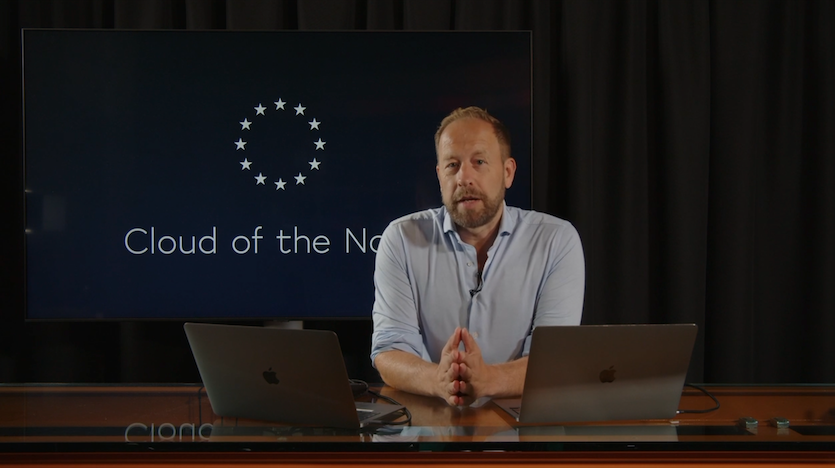Understanding the Live Adaptive Streaming Workflow
Last updated: 6 February 2024

Live adaptive streaming is a complex process that involves multiple components working in tandem to deliver high-quality video content to viewers in real-time. This blog post will break down each key component in a basic live adaptive streaming workflow.
1. Audio and Video Source
The journey of live streaming starts with the audio and video source. This could be a live event captured through cameras and microphones, producing raw video and audio feeds. The quality of these sources plays a crucial role in the final output of the stream. Technical settings such as video dimensions, frame rates, and audio sampling can have an impact on the reliability of the streams further down the workflow.
2. Live Encoder
Once the audio and video are captured, they need to be digitized and compressed for online transmission. This is where the live encoder comes in. Encoders are responsible for encoding videos by converting raw video and audio feeds into digital formats while compressing the data to make it suitable for streaming. They can either be hardware-based or software-based and can also be responsible for encoding the content into different bitrates and resolutions for adaptive streaming. Encoding settings such as codecs, frame rates, and keyframes are crucial for ensuring a smooth stream. For mission-critical live streams, often a redundant setup of two encoders is being used.
3. Uplink Connection
After encoding, the compressed video stream needs to be transmitted to a streaming server or platform. This is done through an uplink connection. The stability and speed of this connection are vital, as any disruption can affect the live stream’s quality and continuity. In many cases where internet streams fail, the uplink connection is the source of the problem. Therefore, it is recommended to always double check the actual upstream capacity. A redundant uplink setup is recommended for mission critical services.
4. Origin Server
The origin streaming server is the initial point of contact for the encoded stream on the internet. It receives the stream from the encoder and makes it available for further distribution. This server must be reliable and have sufficient bandwidth to handle incoming streams. Most platforms offer multiple origin services for redundancy reasons.
5. Transcoder
Transcoding is crucial in adaptive streaming. The transcoder takes the original encoded stream and converts it into multiple versions at various resolutions and bitrates. This process ensures that viewers with different internet speeds and device capabilities can receive a stream that best suits their situation. Transcoding can take place on-premises or in the cloud, depending on requirements such as control, independence, scalability, performance, and costs. A high availability scenario with redundant transcoders is advised.
6. Packager
Once transcoded, the streams are then packaged by the packager. It segments the multiple video qualities into small, manageable chunks and wraps them in a format suitable for adaptive streaming, such as HLS or DASH. This packaging is essential for allowing the stream to adapt to different network conditions and device requirements. Often you will find that origin servers, transcoders and packagers are bundled services, but they can be standalone services too.
7. Digital Rights Management (DRM)
To protect the content from unauthorized use, Digital Rights Management (DRM) is often applied. DRM ensures that only authenticated and authorized users can access the stream, which is crucial for content creators and distributors. Proper DRM services support Widevine, PlayReady and Fairplay DRM, in order to support as many devices as possible out there. To learn more about DRM, check out our DRM guide.
8. Content Delivery Networks (CDNs)
CDNs play a critical role in distributing the live stream to a wide audience. They consist of a network of servers distributed globally to deliver content efficiently to viewers regardless of their location. CDNs reduce latency and buffering by caching content closer to the viewer. CDNs pull the live stream from the origin or the packager, and then scale up the stream by caching it in real-time in their vast array of globally distributed servers.
9. Multi-CDN Load Balancing
In mission critical workflows, multiple CDNs are used to ensure even greater reliability and performance. Multi-CDN strategies involve distributing the streaming load across several CDNs to balance traffic and provide redundancy. This approach significantly improves uptime, performance, scale, geographic coverage, and viewer experiences.
10. Video Player
On the user’s end, the video player is the interface through which they access the live stream. Modern video players are HTML5 based and adaptive and permantently optimize for the best stream quality based on the viewer’s current network conditions and device and screen capabilities. They support various formats and are typically embedded in web pages or apps.
11. Analytics
Finally, analytics are crucial for understanding the performance of the live stream. They provide insights into viewer behavior, stream quality, engagement levels, and technical issues. This data is invaluable for optimizing future streams and understanding the audience better.
Conclusion
Live adaptive streaming is a sophisticated process that requires expertise and the seamless integration of multiple components, each of which is specialistic on its own. From the initial capture of audio and video to the final delivery to viewers through advanced networks like CDNs, each element plays a pivotal role in ensuring a high-quality and uninterrupted streaming experience.




